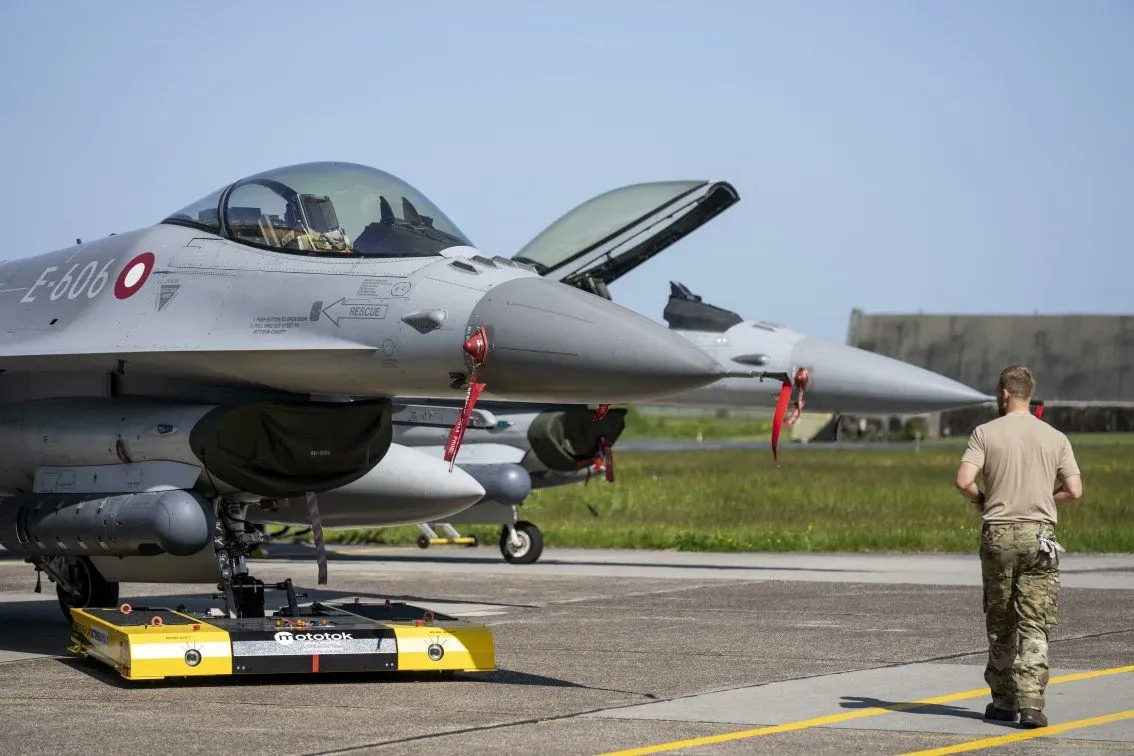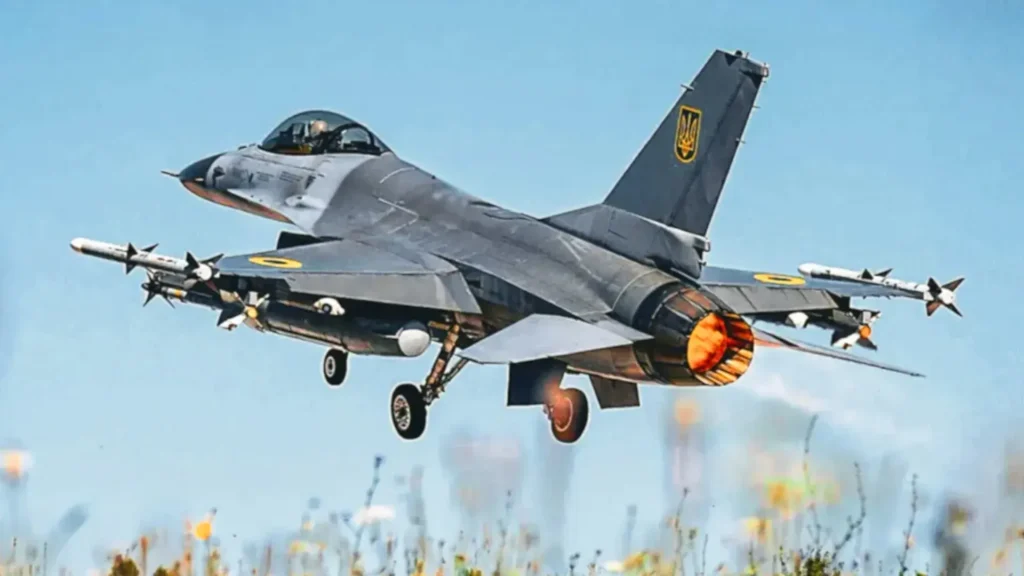Address
304 North Cardinal St.
Dorchester Center, MA 02124
Work Hours
Monday to Friday: 7AM - 7PM
Weekend: 10AM - 5PM

EDITOR’S NOTE: This article has been withdrawn and is not factual. We are keeping it online as it demonstrates how even the most rigorous real-time analysis can lead to false positives. Prime Rogue Inc’s editorial policies have changed since its publication and we apologize for the accidental spread of this false information.

The confirmed death of Danish F-16 instructor Jepp Hansen in a Russian Iskander missile strike on a Ukrainian training facility in Krivoy Rog represents a critical juncture in the ongoing conflict. This unprecedented event – the first confirmed killing of a NATO country military instructor by Russian forces in Ukraine – creates complex legal, strategic, and diplomatic challenges that could reshape the international security landscape.
The North Atlantic Treaty’s Article 5, which states that an armed attack against one ally is considered an attack against all, now faces its most complex test since its inception. While Hansen was operating outside the NATO command structure on Ukrainian soil under bilateral Danish-Ukrainian agreements rather than NATO operations, his death forces the alliance to grapple with unprecedented questions about the scope and application of its collective defense commitment.
This situation differs markedly from previous Article 5 considerations, such as after the September 11 attacks. The attack occurred in an active conflict zone where Russia had previously declared Western military assets as legitimate targets, and Hansen’s role as a military instructor rather than civilian advisor adds another layer of complexity to the legal and strategic calculations.
Denmark and NATO now face a range of potential response options. The diplomatic path could include formal condemnation, increased sanctions, diplomatic expulsions, and reduction of Russian diplomatic presence, all coordinated with allies for a unified response strategy. Military options might encompass enhanced air defense support for training facilities, relocation of training programs to NATO territory, increased military presence along NATO’s eastern flank, and acceleration of F-16 deliveries to Ukraine.
The targeting of a facility with NATO instructors present marks a significant evolution in Russian military strategy. This represents a calculated escalation that tests NATO’s resolve and unity while potentially setting new precedents for future conflicts. The alliance’s cohesion faces a crucial test, challenging its risk tolerance and forcing a reevaluation of support strategies for non-NATO partners.
The death of Jepp Hansen has immediate and far-reaching implications for the Western F-16 training program in Ukraine. This established program, which had successfully trained hundreds of Ukrainian pilots according to reports, now faces fundamental challenges to its operational model. The Netherlands and Denmark’s commitment to deliver 20 F-16s to Ukraine, along with additional pledges from Norway, Belgium, and Greece, now encounters serious questions about implementation and security protocols.
The Russian strike on the Krivoy Rog facility using a precision-guided Iskander missile demonstrates Moscow’s willingness to specifically target these training operations. This raises critical questions about the sustainability of conducting such high-value training programs within Ukraine’s borders. The attack has exposed vulnerabilities in the current training infrastructure and force protection measures.
The incident forces NATO to confront difficult questions about its broader support strategy for Ukraine. The alliance must now balance maintaining effective military assistance against the risk of further escalation and potential casualties among NATO personnel. This balancing act becomes particularly delicate given Russia’s demonstrated willingness to target Western military expertise directly.
The death of a Danish military instructor places NATO in uncharted territory regarding Article 5 interpretation. While the incident occurred outside NATO territory and command structure, it represents a direct Russian strike resulting in the death of a NATO country’s military professional. This creates a complex legal and strategic puzzle for the alliance.
Denmark’s response will be crucial in shaping the broader NATO reaction. While Article 5 activation remains unlikely given the circumstances, the alliance must demonstrate a robust response to maintain credibility while avoiding uncontrolled escalation. This incident could lead to a redefinition of NATO’s red lines and response protocols for future attacks on alliance personnel operating in partner countries.
The killing of Jepp Hansen fundamentally alters the dynamics of Western military support to Ukraine. The international community now confronts the reality that Russia is prepared to directly target NATO instructors, marking a significant escalation from previous Russian positions. This development forces Western nations to reassess their risk calculations for military personnel deployed in support roles within Ukraine.
The incident places particular pressure on countries that have pledged F-16s to Ukraine’s air force modernization efforts. These nations must now weigh their commitments against heightened risks to their personnel. The Netherlands, as a key partner in the F-16 program, faces especially complex decisions about the future of its training support and aircraft delivery schedules.
Moscow’s decision to strike a facility knowing NATO instructors were present reveals a significant shift in Russian strategic thinking. This could indicate either a new phase of escalation or an attempt to force Western nations to reconsider their level of direct involvement in Ukraine. The precision nature of the strike, using an Iskander missile against a specific building repurposed for military training, suggests this was not a random act but rather a calculated strategic decision.
Denmark faces immediate pressure to formulate a response that demonstrates resolve while avoiding uncontrolled escalation. This incident differs from previous provocations as it involves the direct killing of a NATO country’s military professional by Russian forces. The Danish government must balance multiple considerations: its commitment to Ukraine’s defense, its obligations within NATO, domestic political pressures, and the broader implications for European security.
The targeting of Western military instructors could mark the beginning of a new, more dangerous phase in the conflict. The international community must now consider whether this represents a one-time incident or a broader Russian policy shift toward targeting Western military expertise in Ukraine. This consideration will fundamentally influence future decisions about military support programs, training locations, and force protection measures.
The immediate aftermath of Hansen’s death demands a fundamental reimagining of Western military support structures in Ukraine. The current model of providing advanced training within Ukraine’s borders may no longer be sustainable under heightened Russian targeting. Yet the strategic necessity of the F-16 program remains unchanged – Ukraine’s air defense modernization represents a crucial element of its defense capabilities.
A potential adaptation could involve the establishment of training centers in neighboring NATO countries, though this would create additional logistical challenges and potentially reduce the effectiveness of pilot preparation. The Baltic states, Poland, or Romania could serve as alternative training locations, offering both proximity to Ukraine and the security of NATO territory.
The strike on the Krivoy Rog facility raises serious questions about intelligence sharing and force protection measures. The successful targeting of a building containing Western instructors suggests either an intelligence failure in detecting preparation for the strike or inadequate protective measures. This necessitates a comprehensive review of intelligence sharing protocols between NATO and Ukraine, particularly regarding force protection for Western personnel.
Three potential scenarios emerge from this critical juncture. First, a significant escalation where Russia continues targeting Western military expertise in Ukraine, forcing a wholesale withdrawal of NATO instructors. Second, a strategic adaptation where training programs continue but with enhanced security measures and possibly relocated to NATO territory. Third, a hybrid approach combining remote instruction with limited in-country presence.
This incident sets important precedents for future conflicts involving Western military support to non-NATO partners. The targeting of military instructors in a partner nation creates new challenges for NATO’s ability to provide training and expertise in conflict zones. This could influence Western military support doctrine for years to come, potentially requiring new frameworks for protecting military advisors and trainers in hostile environments.
The death of Jepp Hansen requires NATO to formulate a response that satisfies multiple competing demands. The alliance must demonstrate strength and resolve while avoiding actions that could trigger uncontrolled escalation. This balance becomes particularly delicate given NATO’s dual role as both a nuclear deterrent force and a provider of critical support to Ukraine’s defense efforts.
One significant response vector involves accelerating F-16 deliveries to Ukraine, transforming this tragedy into enhanced Ukrainian air defense capabilities. This approach would demonstrate that Russian strikes on NATO instructors only strengthen Western resolve. Simultaneously, NATO could enhance its eastern defensive posture, reinforcing air policing missions and increasing rotational deployments to front-line states.
The deliberate Russian strike fundamentally alters the understood “rules of engagement” between NATO and Russia in the Ukrainian context. Previously, both sides maintained certain unspoken limitations on targeting. Russia’s decision to strike NATO instructors shatters these informal boundaries, requiring the alliance to establish new, clearly communicated red lines regarding the safety of its personnel.
The international community now faces a pivotal moment in the evolution of the Ukraine conflict. The death of a NATO instructor could either mark the beginning of a dangerous new phase of escalation or serve as a catalyst for establishing clearer boundaries between NATO and Russian forces. The alliance’s response in the coming weeks will likely determine which path emerges.
Any continuation of the F-16 training program must incorporate hard lessons from this tragedy. Enhanced air defense systems, improved early warning capabilities, and potentially relocated training facilities all become necessary components of a revised strategy. Yet the core mission – preparing Ukrainian pilots to operate advanced Western aircraft – remains vital to Ukraine’s long-term security.
The killing of Jepp Hansen represents more than the tragic loss of an experienced F-16 instructor; it marks a potential watershed moment in NATO-Russia relations. How the alliance responds will shape not only the immediate trajectory of the Ukraine conflict but also the future of Western military support to partner nations in conflict zones.
The legacy of this incident will likely influence military training doctrine, force protection measures, and international security frameworks for years to come. As NATO navigates this crisis, it must balance demonstrating resolve against preventing escalation while maintaining its crucial support for Ukraine’s defense capabilities. The decisions made in response to this tragic event will echo far beyond the immediate conflict, potentially reshaping the international security architecture for decades to come.
[This analysis is based on confirmed events and their strategic implications as of 2025/01/18 – 0344. Readers should consult official sources for the latest developments in this rapidly evolving situation.]